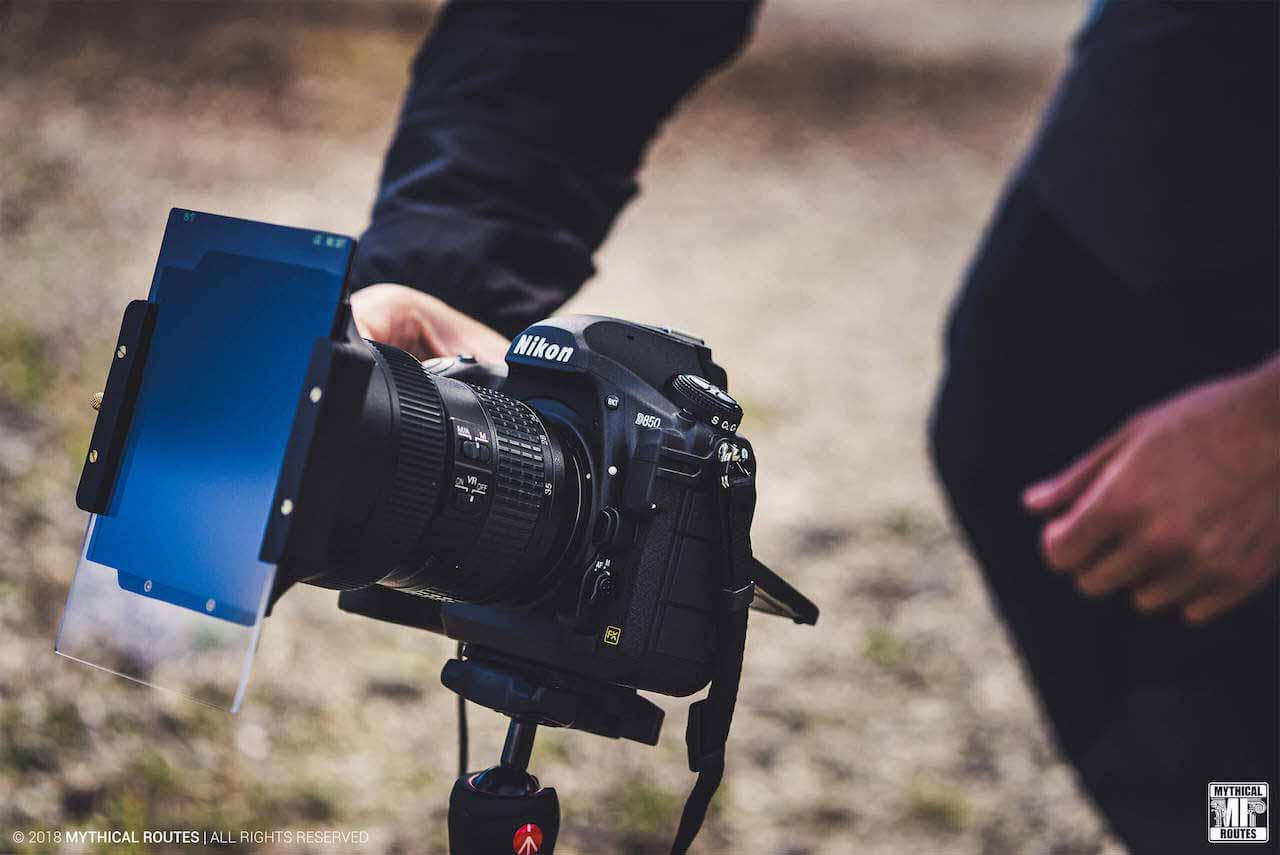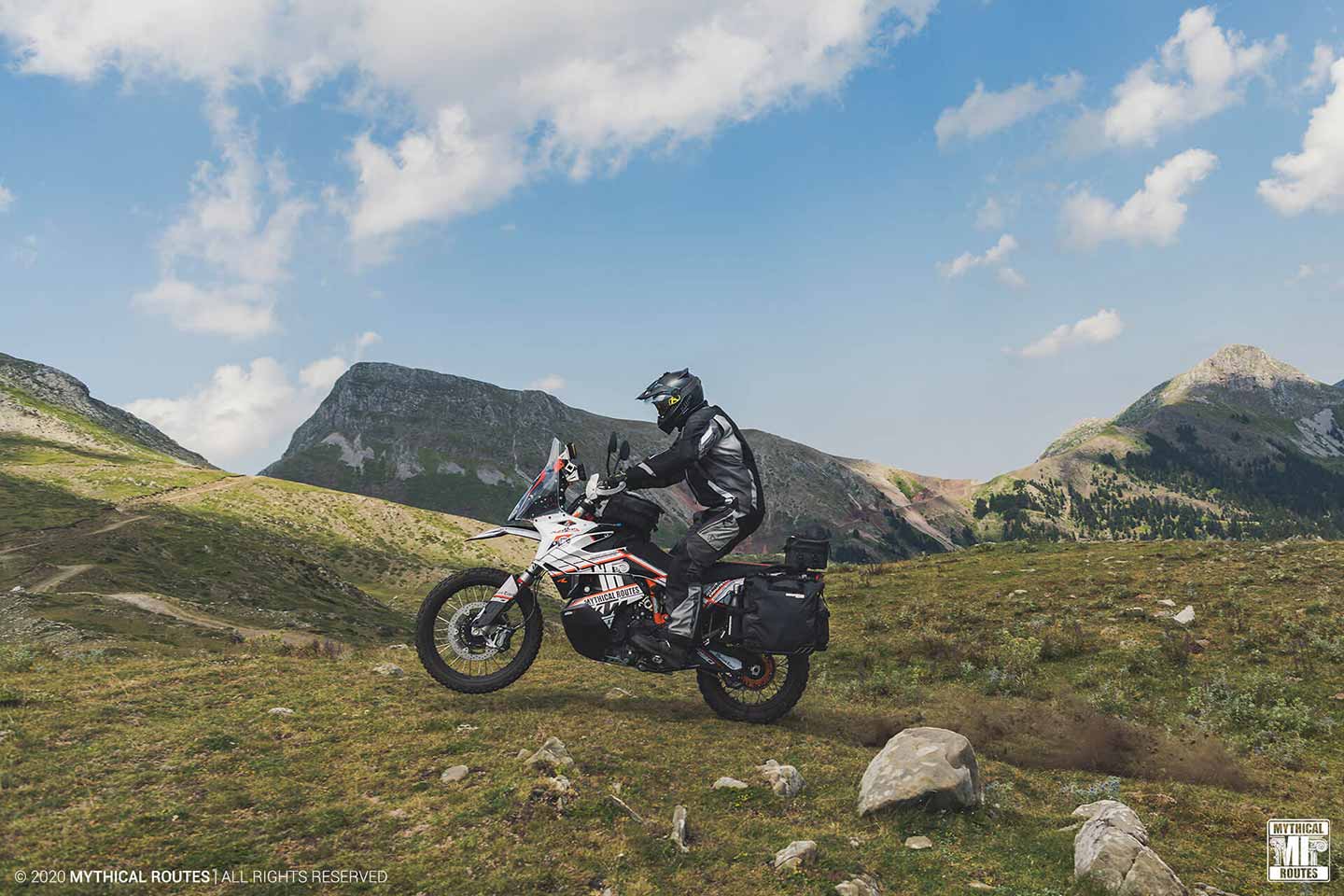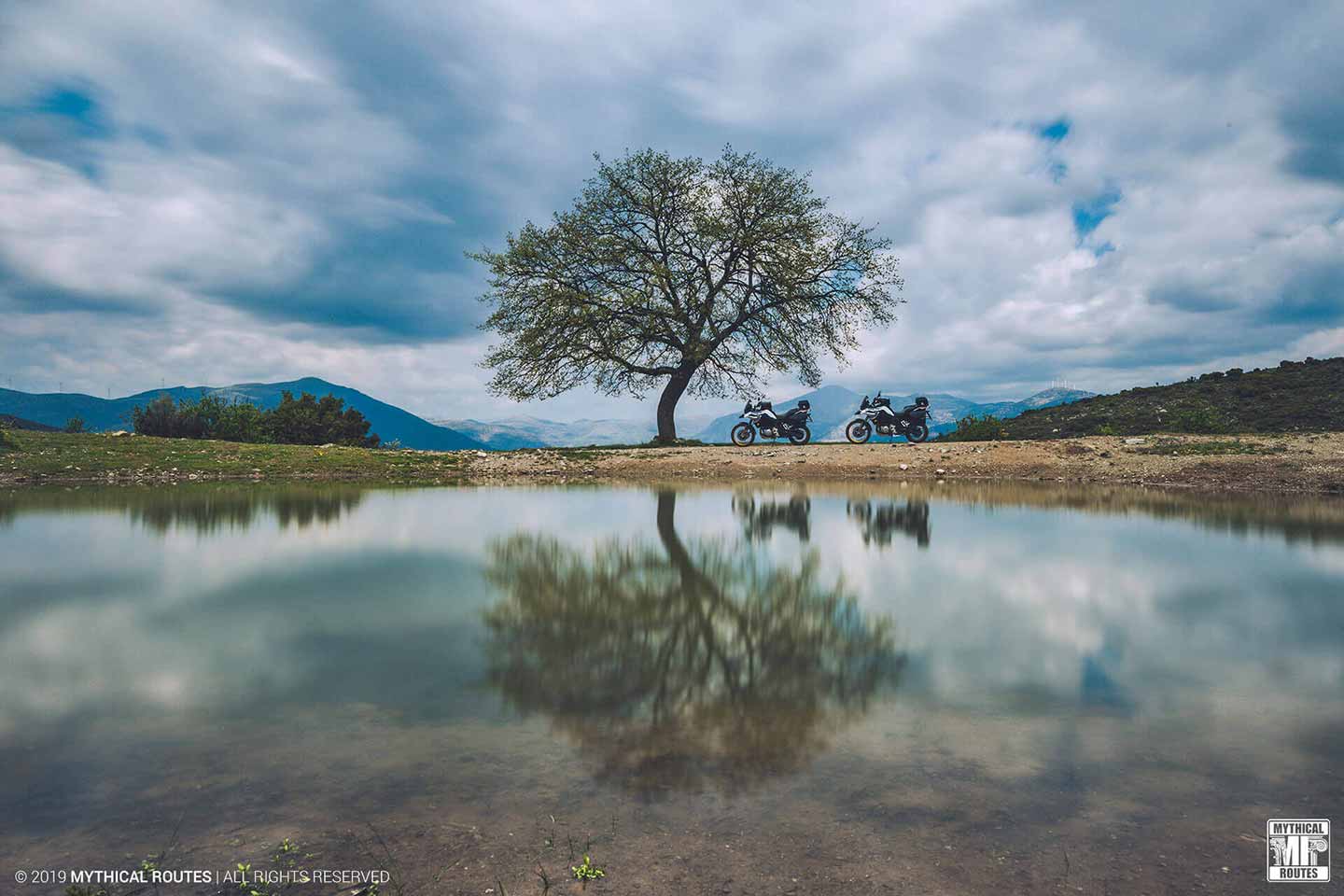
Engaging in amateur or professional adventure photography requires relatively expensive equipment, knowledge of your camera, an understanding of photographic composition, and a passion for photography! The two key elements that you have to consider when choosing your next camera are total gear weight and working conditions. Gear Weight, because you have to carry all required photographic equipment for days, in difficult conditions, and on top of everything else that you would already pack (camping gear, riding gear, etc.). Working conditions, because you are exposed to extreme weather conditions, rain, and dust. After all, the best photos we made under difficult conditions.
I have been an SLR/DSLR user for the last 20+ years, always using professional-grade cameras like the Nikon F100 (film), Nikon D200 / D300s (crop-sensor), and Nikon D750 (full-frame). The reason for this is that my working environment is always full of dust, mud, moisture, and rain. All my camera gear is stored in backpacks for off-road use and tank-bags and panniers for on-road use, constantly bouncing and receiving vibrations. So camera endurance is my number one priority. In 2018 I decided that is it was about time to upgrade all of my camera gear, lenses included, it was the perfect time to look at all available possibilities.

The only serious contenders, that would endure the harsh conditions of off-road motorcycle riding, hiking, etc, and offer professional-grade performance are Nikon, Canon, and Sony. The first two brands offer both mirrorless and classic DSLR options, but Sony is known for the awesome video capabilities and performance of its mirrorless models. Unfortunately, I happened to watch many rain-resistance tests between all three brands, and constantly all mirrorless options failed miserably. I would really love to carry less weight, but the roughness of traditional DSLRs and their weather-sealed lenses is a big factor. So, I would pass the mirrorless hype, since being in remote locations with a damaged camera is a real bummer.
Now, this is a big argument. If ACTION is all that you care to showcase, a new 8/10fps crop-sensor camera like the Nikon D500 or the Canon 7D Mark II is ideal for the job. You get robustness and weather-seal performance form alloy bodies, fast fps to capture everything, and a 1,5-1,7X magnification factor from all FX lenses, to get a better reach. If on the other hand, you are also interested in LANDSCAPE photography, which is the other half of travel photography then you should also consider a modern FX camera like the Nikon D850 and the Canon 5D Mark IV. You will get slightly slower fps, but ridiculously great performance and resolution in all lighting conditions.
In my case, any FX camera is a no-brainer choice, since I had to choose between the sports camera that is lacking in landscape photography and the full-frame beast with less impressive fps from that sports camera. I rejected the Nikon D5 and the Canon EOS-1D X Mark II because of their steep price tag, which is not equivalent to their performance. All the above, in combination with my soft-spot for the yellow tag, left me with one option: the 45,7 million pixel FX Titan Nikon D850 (CMOS 35,9 mm x 23,9 mm). For analysis of this incredible camera, check D850.

Taking into account the noise-reduction capabilities of all modern DSLR and Mirrorless cameras, lens choice is a balance between Optical Performance and Lens Weight. Allround travel lenses like the 28-300mm f/3.5-5.6 lens are ok, but will not give you that wow shot, regarding camera choice. A crap lens will give you a crap photo, even on a D5! On the other hand, anyone that has used a 70-200mm f/2.8 lens will tell you that he would hate to carry one on his back, all day long, for several days.
I personally believe that the best lens used for travel and adventure photography is a matter of compromise. I would definitely recommend the use of a good lens of a 24-70mm f/2.8 as my main lens but would use only f4 lenses for the rest of my gear. This way I can have a total of 3-4 lenses that weigh less and still got an f/2.8 for performance. The Nikon gear that I use is:
On the above setup, I would add something like the Nikkor 20mm f/1.8G ED for astrophotography, or the Nikkor 14-24mm f/2.8G ED N for sharper ultrawide photos without ND filters.